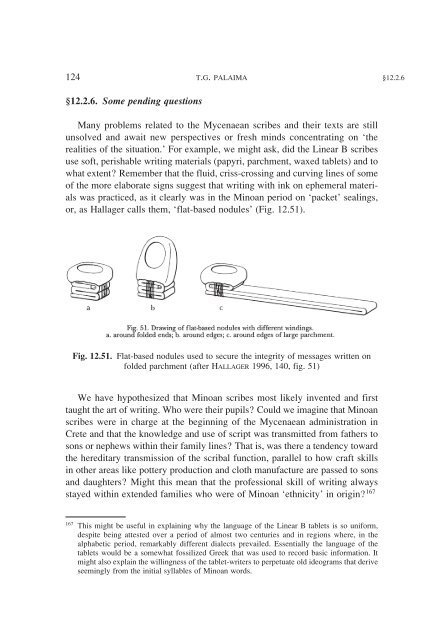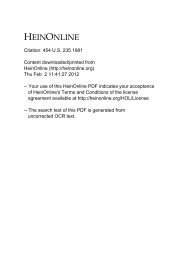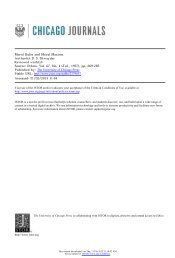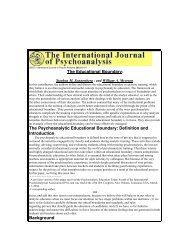A Companion to Linear B - The University of Texas at Austin
A Companion to Linear B - The University of Texas at Austin
A Companion to Linear B - The University of Texas at Austin
Create successful ePaper yourself
Turn your PDF publications into a flip-book with our unique Google optimized e-Paper software.
124 T.G. PALAIMA §12.2.6<br />
§12.2.6. Some pending questions<br />
Many problems rel<strong>at</strong>ed <strong>to</strong> the Mycenaean scribes and their texts are still<br />
unsolved and await new perspectives or fresh minds concentr<strong>at</strong>ing on ‘the<br />
realities <strong>of</strong> the situ<strong>at</strong>ion.’ For example, we might ask, did the <strong>Linear</strong> B scribes<br />
use s<strong>of</strong>t, perishable writing m<strong>at</strong>erials (papyri, parchment, waxed tablets) and <strong>to</strong><br />
wh<strong>at</strong> extent? Remember th<strong>at</strong> the fluid, criss-crossing and curving lines <strong>of</strong> some<br />
<strong>of</strong> the more elabor<strong>at</strong>e signs suggest th<strong>at</strong> writing with ink on ephemeral m<strong>at</strong>erials<br />
was practiced, as it clearly was in the Minoan period on ‘packet’ sealings,<br />
or, as Hallager calls them, ‘fl<strong>at</strong>-based nodules’ (Fig. 12.51).<br />
Fig. 12.51. Fl<strong>at</strong>-based nodules used <strong>to</strong> secure the integrity <strong>of</strong> messages written on<br />
folded parchment (after HALLAGER 1996, 140, fig. 51)<br />
We have hypothesized th<strong>at</strong> Minoan scribes most likely invented and first<br />
taught the art <strong>of</strong> writing. Who were their pupils? Could we imagine th<strong>at</strong> Minoan<br />
scribes were in charge <strong>at</strong> the beginning <strong>of</strong> the Mycenaean administr<strong>at</strong>ion in<br />
Crete and th<strong>at</strong> the knowledge and use <strong>of</strong> script was transmitted from f<strong>at</strong>hers <strong>to</strong><br />
sons or nephews within their family lines? Th<strong>at</strong> is, was there a tendency <strong>to</strong>ward<br />
the hereditary transmission <strong>of</strong> the scribal function, parallel <strong>to</strong> how craft skills<br />
in other areas like pottery production and cloth manufacture are passed <strong>to</strong> sons<br />
and daughters? Might this mean th<strong>at</strong> the pr<strong>of</strong>essional skill <strong>of</strong> writing always<br />
stayed within extended families who were <strong>of</strong> Minoan ‘ethnicity’ in origin? 167<br />
167 This might be useful in explaining why the language <strong>of</strong> the <strong>Linear</strong> B tablets is so uniform,<br />
despite being <strong>at</strong>tested over a period <strong>of</strong> almost two centuries and in regions where, in the<br />
alphabetic period, remarkably different dialects prevailed. Essentially the language <strong>of</strong> the<br />
tablets would be a somewh<strong>at</strong> fossilized Greek th<strong>at</strong> was used <strong>to</strong> record basic inform<strong>at</strong>ion. It<br />
might also explain the willingness <strong>of</strong> the tablet-writers <strong>to</strong> perpetu<strong>at</strong>e old ideograms th<strong>at</strong> derive<br />
seemingly from the initial syllables <strong>of</strong> Minoan words.

















